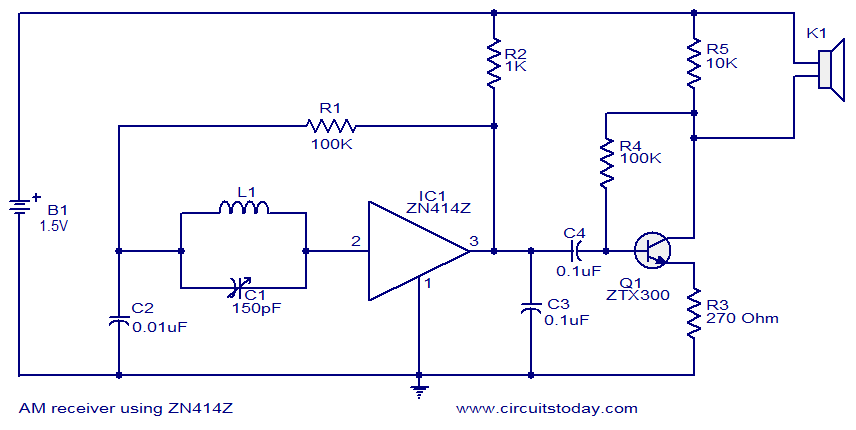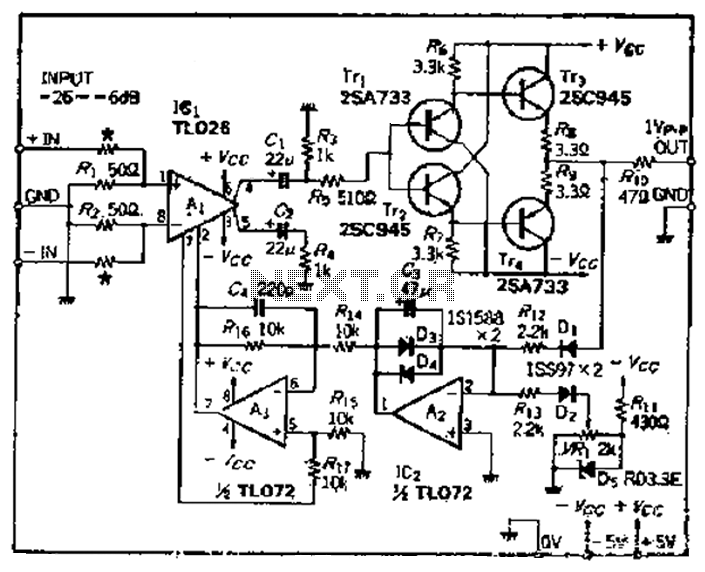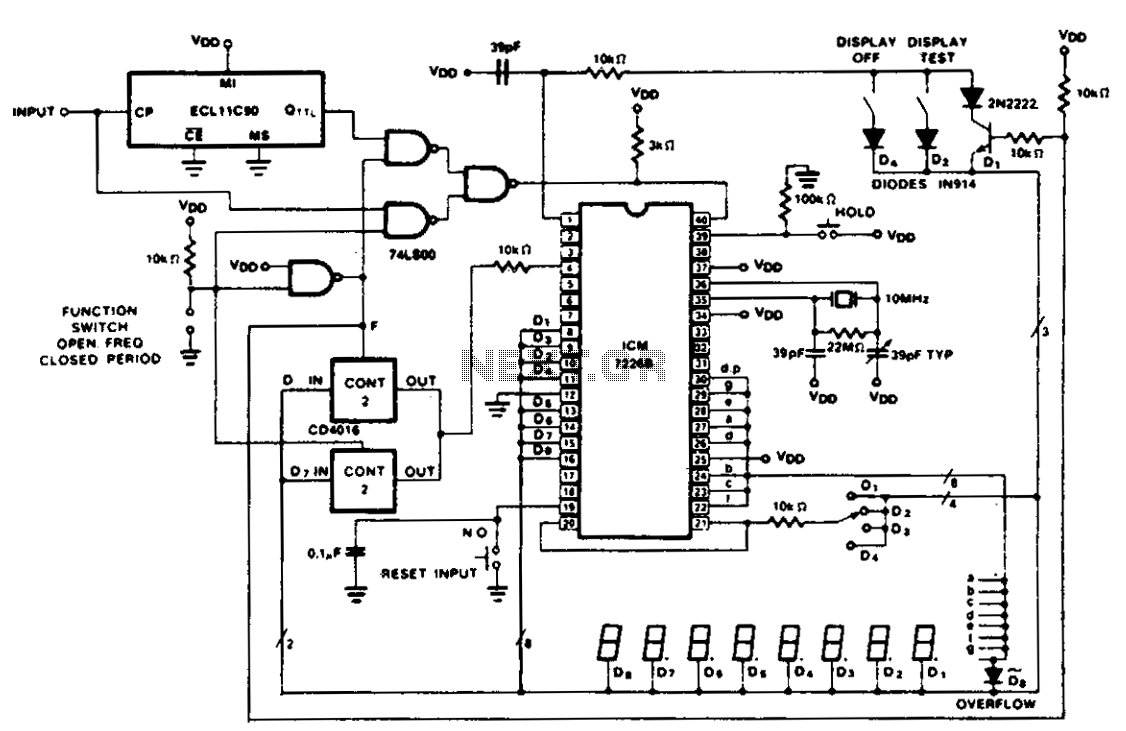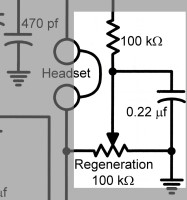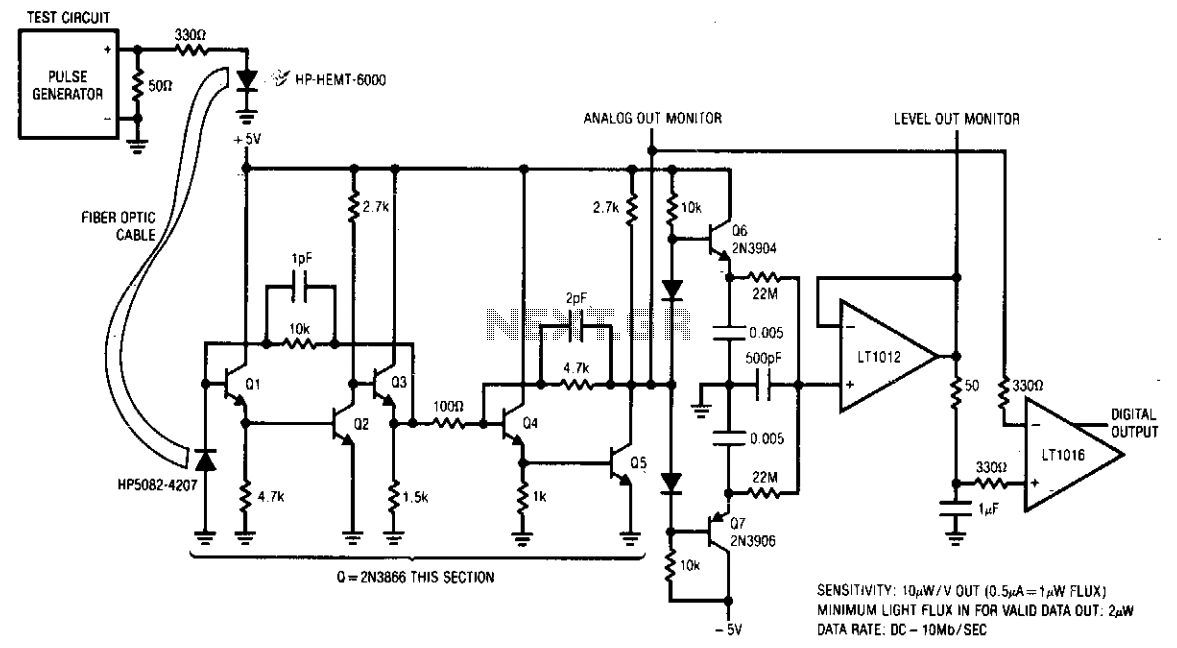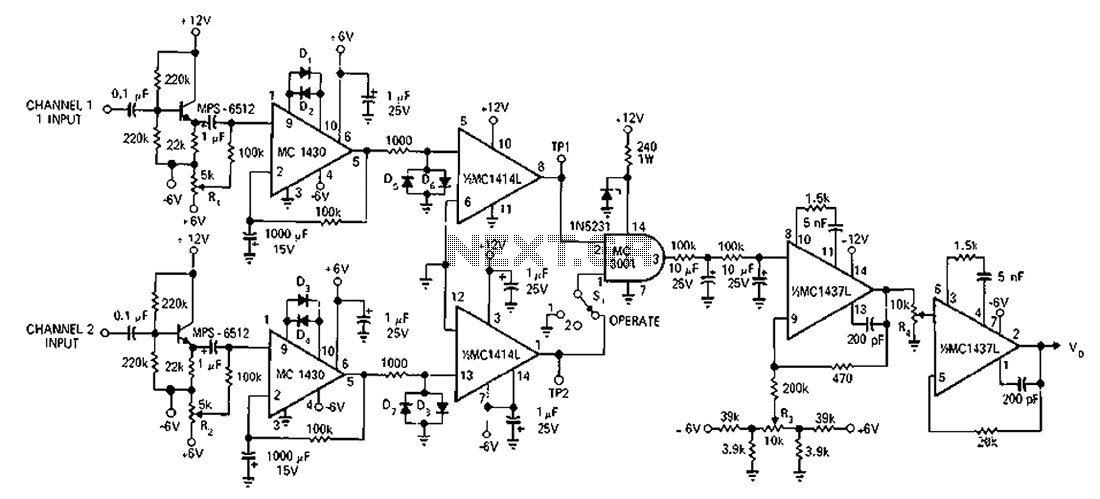
50 MHz Receiver
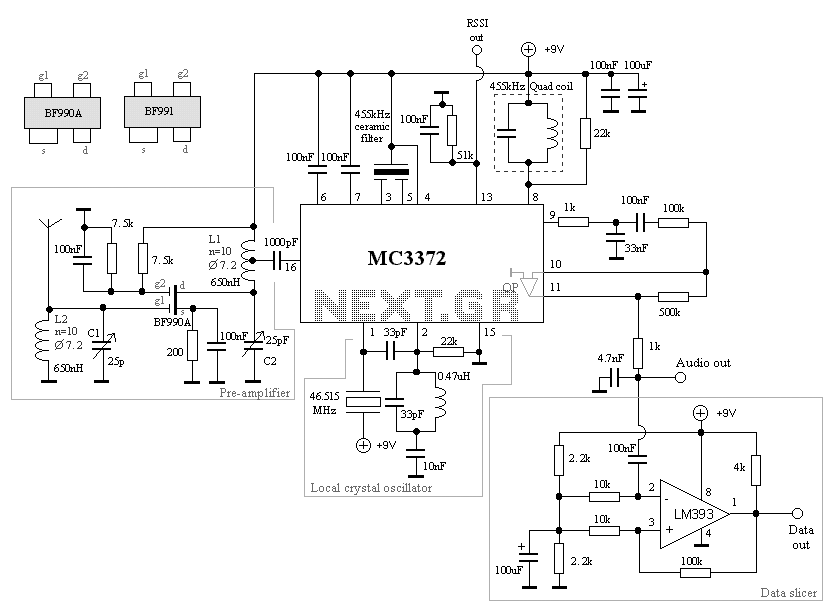
The purpose of this project is to build a simple receiver for 50MHz. The receiver is built around the circuit MC3372, which is a narrow band FM receiver. The receiving frequency can be set with an LC tank or with a crystal. To increase the sensitivity of this circuit, an antenna preamplifier has been added. A circuit MC3371/MC3372, which is a very simple circuit to handle, is utilized. The design aims to handle all kinds of signals, including both audio and data. To enhance sensitivity, a dual gate input FET amplifier has been included. The complete receiver will be housed in a metal case and used with an external audio amplifier or microcontroller. The circuit contains everything needed for a receiver. The 455kHz ceramic filter is a narrow band filter, commonly found in the AM section of some old radios. However, a sharper type of filter, often used in old cordless phones, is preferred. The preamplifier consists of a dual gate MOSFET, with the BF990 and BF991 being favored for their performance. Various types can be used, provided they have low noise values and high gain. Two hand-made coils, L1 and L2, are utilized in this construction, with L1 being tapped at 5 turns for impedance matching with the MC3372 circuit. Testing has indicated that this tap point offers optimal performance. The antenna is recommended to be connected to a tap point near the cold side of the coil for best performance. Field tests suggest that connecting the antenna (80cm wire) to the top of the coil yields the best overall performance, albeit with reduced selectivity. Performance can be optimized by monitoring the RSSI output with a voltmeter and tuning the preamplifier accordingly. The audio demodulator consists of an LC unit (quad coil) tuned to 455kHz, commonly found in AM radios, and can be replaced with a ceramic resonator. An operational amplifier is included within the circuit to amplify the audio signal, along with a squelch unit. The circuit requires only a few components to function, achieving sensitivity under 1 µV. Although the preamplifier can be excluded, it is recommended for improved receiving performance.
The circuit design integrates the MC3372 FM receiver chip, which operates effectively within the specified 50MHz range. The use of an LC tank circuit or a crystal oscillator allows for precise tuning, enabling the reception of various frequencies. The antenna preamplifier, utilizing a dual gate MOSFET, enhances the signal strength before it reaches the main receiver circuit, thus improving overall sensitivity and reception quality.
The inclusion of a 455kHz ceramic filter ensures that only the desired frequency band is processed, minimizing interference from other signals. The choice of a sharper filter, typically found in cordless phones, can further refine selectivity, allowing for clearer audio reception. The hand-wound coils, L1 and L2, are critical components for impedance matching and tuning. The specified coil dimensions and winding turns are tailored to achieve approximately 650 nH inductance, which is optimal for the operating frequency.
The design also emphasizes the importance of antenna placement and connection points. By experimenting with different tap points, users can fine-tune the receiver's performance to suit their specific environment and signal conditions. The use of an RSSI output for real-time monitoring facilitates adjustments to the preamplifier, ensuring that the receiver operates at peak efficiency.
The audio demodulation section, featuring a quad coil tuned to 455kHz, is designed to decode the received signal into an audible format. The operational amplifier enhances the audio output, while the squelch unit helps eliminate unwanted noise during silent periods, providing a cleaner listening experience.
Overall, this receiver design is a versatile and sensitive solution for capturing a wide range of signals, suitable for both audio and data transmission applications. The compact design housed in a metal case ensures durability and reduces electromagnetic interference, making it an excellent choice for various practical applications.The purpose of this project is to build a simple receiver for 50MHz. The Receiver is built around the circuit MC3372, wich is a narrow band FM receiver. The receiving frequency can be set with a LC tank or with a crystal. To increase the sensitivity of this circuit I have added a antenna preamplifier. I have found a circuit MC3371/MC3372 wich is very simple circuit to handle. I wanted to build a receiver wich can handle all kinds of signals. I both want to receive audio and data. To increase the sensitivity, I have added a dual gate input FET amplifier. The complete receivier will be built into a metal-case and used with a external audio amplifier or microcontroller. As you can see the circuit contains everything one need for a receiver. The 455kHz ceramic filter is a narrow band filter. You can find 455kHz keramic filter in AM section in some old radio. However the best filter is a sharper type found most often in old cordless phones, maybe there is some place to order them. The preamplifier consist of a dual gate mosfet. I have fall inlove with the type BF990 and BF 991. They are surface mounted and have good performances. You can use many different types, just check that they have low noise value and high gaing. There are two hand made coils in this construction, L1 and L2. I used a drill with 7.2 mm diameter and I made them 10 turns. It will give you about 650 nH. Coil L1 is taped at 5 turns. This is to impedance match the preamplifier with the MC3372 circuit. How do I know the tap should be at 5 turns, well I have been testing my receiver with different tap points and I have found that a tap at 5 turns will give you the best performance.
You can play yourself with different taps and test your receiver. The antenna should also be connected to a tap point close to the cold side of the coil to give the best performance, see my Front end design of antenna page to understand why. Well, I have also made some field test and I have found that the best performance will be if the antenna (80cm wire) is connected to the top of the coil.
The selectivity will not be so good, but the overal performance will till be best this way. If you want you can play with this tap also. I made one receiver with the antenna connected to tap point at 5 turn and the receiver worked well. To find the best performance you should attach a voltmeter to the RSSI output and tune the preamplifier for best readings. Easiest is if you use an analogue instrument. The audio demodulator is a LC unit (quad coil) tuned to 455kHz. This type of quad-coils is often found in AM radios. It is a CAN with yellow slug. The MC3372 can be used with a ceramic resonator instead of quad coil. Inside the circuit is a operational amplifier wich can be used to amplify the audio signal and there is a squelch unit.
The circuit need just a few componets to work, and the sensitivity is under 1 uV. I have still added a preamplifier to improve the selectivity and the input stage. If you want you can exclude the preamplifier, but the reciving will not be as good. 🔗 External reference
The circuit design integrates the MC3372 FM receiver chip, which operates effectively within the specified 50MHz range. The use of an LC tank circuit or a crystal oscillator allows for precise tuning, enabling the reception of various frequencies. The antenna preamplifier, utilizing a dual gate MOSFET, enhances the signal strength before it reaches the main receiver circuit, thus improving overall sensitivity and reception quality.
The inclusion of a 455kHz ceramic filter ensures that only the desired frequency band is processed, minimizing interference from other signals. The choice of a sharper filter, typically found in cordless phones, can further refine selectivity, allowing for clearer audio reception. The hand-wound coils, L1 and L2, are critical components for impedance matching and tuning. The specified coil dimensions and winding turns are tailored to achieve approximately 650 nH inductance, which is optimal for the operating frequency.
The design also emphasizes the importance of antenna placement and connection points. By experimenting with different tap points, users can fine-tune the receiver's performance to suit their specific environment and signal conditions. The use of an RSSI output for real-time monitoring facilitates adjustments to the preamplifier, ensuring that the receiver operates at peak efficiency.
The audio demodulation section, featuring a quad coil tuned to 455kHz, is designed to decode the received signal into an audible format. The operational amplifier enhances the audio output, while the squelch unit helps eliminate unwanted noise during silent periods, providing a cleaner listening experience.
Overall, this receiver design is a versatile and sensitive solution for capturing a wide range of signals, suitable for both audio and data transmission applications. The compact design housed in a metal case ensures durability and reduces electromagnetic interference, making it an excellent choice for various practical applications.The purpose of this project is to build a simple receiver for 50MHz. The Receiver is built around the circuit MC3372, wich is a narrow band FM receiver. The receiving frequency can be set with a LC tank or with a crystal. To increase the sensitivity of this circuit I have added a antenna preamplifier. I have found a circuit MC3371/MC3372 wich is very simple circuit to handle. I wanted to build a receiver wich can handle all kinds of signals. I both want to receive audio and data. To increase the sensitivity, I have added a dual gate input FET amplifier. The complete receivier will be built into a metal-case and used with a external audio amplifier or microcontroller. As you can see the circuit contains everything one need for a receiver. The 455kHz ceramic filter is a narrow band filter. You can find 455kHz keramic filter in AM section in some old radio. However the best filter is a sharper type found most often in old cordless phones, maybe there is some place to order them. The preamplifier consist of a dual gate mosfet. I have fall inlove with the type BF990 and BF 991. They are surface mounted and have good performances. You can use many different types, just check that they have low noise value and high gaing. There are two hand made coils in this construction, L1 and L2. I used a drill with 7.2 mm diameter and I made them 10 turns. It will give you about 650 nH. Coil L1 is taped at 5 turns. This is to impedance match the preamplifier with the MC3372 circuit. How do I know the tap should be at 5 turns, well I have been testing my receiver with different tap points and I have found that a tap at 5 turns will give you the best performance.
You can play yourself with different taps and test your receiver. The antenna should also be connected to a tap point close to the cold side of the coil to give the best performance, see my Front end design of antenna page to understand why. Well, I have also made some field test and I have found that the best performance will be if the antenna (80cm wire) is connected to the top of the coil.
The selectivity will not be so good, but the overal performance will till be best this way. If you want you can play with this tap also. I made one receiver with the antenna connected to tap point at 5 turn and the receiver worked well. To find the best performance you should attach a voltmeter to the RSSI output and tune the preamplifier for best readings. Easiest is if you use an analogue instrument. The audio demodulator is a LC unit (quad coil) tuned to 455kHz. This type of quad-coils is often found in AM radios. It is a CAN with yellow slug. The MC3372 can be used with a ceramic resonator instead of quad coil. Inside the circuit is a operational amplifier wich can be used to amplify the audio signal and there is a squelch unit.
The circuit need just a few componets to work, and the sensitivity is under 1 uV. I have still added a preamplifier to improve the selectivity and the input stage. If you want you can exclude the preamplifier, but the reciving will not be as good. 🔗 External reference
